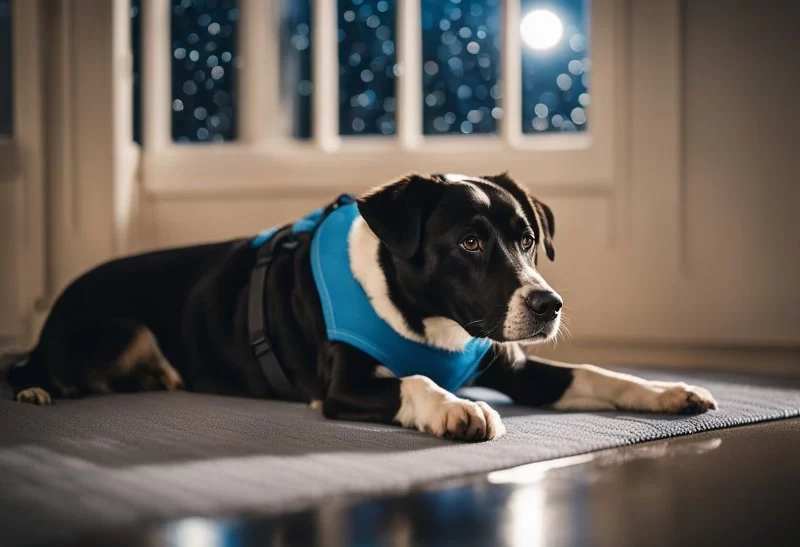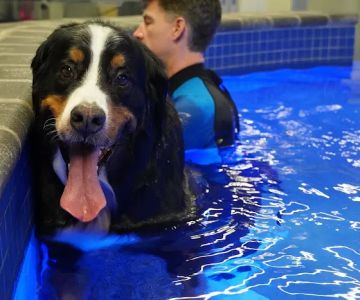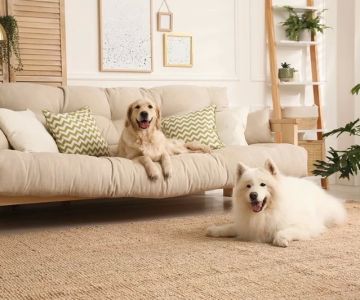- Understanding Why Dogs Get Excited Around Children
- Training Basics for Keeping Your Dog Calm
- Creating a Safe Space for Dogs and Children
- Positive Reinforcement Techniques for Calm Behavior
- Case Studies of Dogs and Children Interaction
Understanding Why Dogs Get Excited Around Children
Dogs can often exhibit overly excited or even anxious behavior when around children. This can happen for several reasons: the high-pitched voices of children, the unpredictable movements they make, or even the amount of energy children naturally radiate. Dogs, especially those that are not used to kids, may perceive these behaviors as overwhelming, leading to overexcitement or stress.
Additionally, certain dogs may have had negative or little exposure to children in the past, which can also cause them to react in ways that may seem inappropriate or uncontrollable. Understanding the root cause of your dog’s excitement or anxiety is the first step to addressing the behavior and creating a peaceful environment for both your dog and children.
Training Basics for Keeping Your Dog Calm
Training your dog to stay calm around children requires patience and consistency. Here are a few training basics to get you started:
- Introduce Slowly: If your dog has not been around children before, start by introducing them in a calm and controlled environment. Allow the dog to observe from a distance and gradually allow closer interactions, always ensuring the dog feels safe and not cornered.
- Teach Basic Commands: Basic commands like “sit,” “stay,” and “calm” can be invaluable when managing your dog’s behavior. When your dog starts to get excited, calmly give the command and reward them when they respond appropriately.
- Use Desensitization: Gradually expose your dog to sounds and actions they may find overwhelming, such as loud noises or quick movements. Start at a distance and reduce the space as your dog becomes more comfortable.
Incorporating these basic commands into your daily routine can help create an environment where your dog feels more in control and relaxed around children.
Creating a Safe Space for Dogs and Children
It’s important to create a safe environment for both your dog and children. Children should understand the importance of respecting a dog’s space, especially when the dog is eating, resting, or playing with their toys. Teach children how to interact calmly with dogs and the importance of giving them breaks when they need some time to themselves.
For dogs, having their own space where they can retreat to when they feel overwhelmed or need a break is crucial. This could be a crate, a designated bed, or a specific room where the dog can relax away from the hustle and bustle of everyday life.
By setting clear boundaries and encouraging positive behavior, you can foster a relationship where both your dog and children feel safe and comfortable.
Positive Reinforcement Techniques for Calm Behavior
Positive reinforcement is one of the most effective ways to teach your dog calm behavior around children. Rewarding your dog for calm, appropriate behavior helps them understand that staying relaxed leads to positive outcomes. Here are some ways to use positive reinforcement:
- Reward Calmness: When your dog stays calm around children, reward them with a treat, affection, or praise. This reinforces the behavior and encourages them to remain calm during future interactions.
- Consistency is Key: Be consistent with your rewards and training. If your dog behaves calmly in a situation, make sure to reward them every time. Consistency will help them learn quicker.
- Use High-Value Treats: Sometimes, your dog may need extra motivation. Use high-value treats that your dog loves but doesn’t get on a regular basis to make the reward more enticing.
Over time, your dog will start to associate calm behavior with positive experiences, making it more likely they’ll stay composed around children.
Case Studies of Dogs and Children Interaction
Many families have successfully trained their dogs to stay calm around children. One such example is the case of “Bella,” a rescue dog who was initially anxious and reactive around children. After consistent training using positive reinforcement, Bella became more comfortable, even learning to walk calmly beside children during family outings. With a safe space to retreat to and proper training, Bella’s behavior improved dramatically.
Another example is “Max,” a golden retriever who used to bark excessively and jump on children when they played in the backyard. Through a gradual desensitization process and reinforcing calm behavior, Max learned to sit calmly and watch the children from a safe distance, ensuring both his comfort and the safety of the children.
These examples show how effective patience, positive reinforcement, and proper training can be in creating a peaceful atmosphere for both pets and children.
If you need expert advice or are looking for the best products to aid in training your dog, check out Hidden Brook Veterinary. We offer a wide range of pet care items that can help make training your dog easier and more effective. Start creating a calm and safe environment for your family and your pets today!












